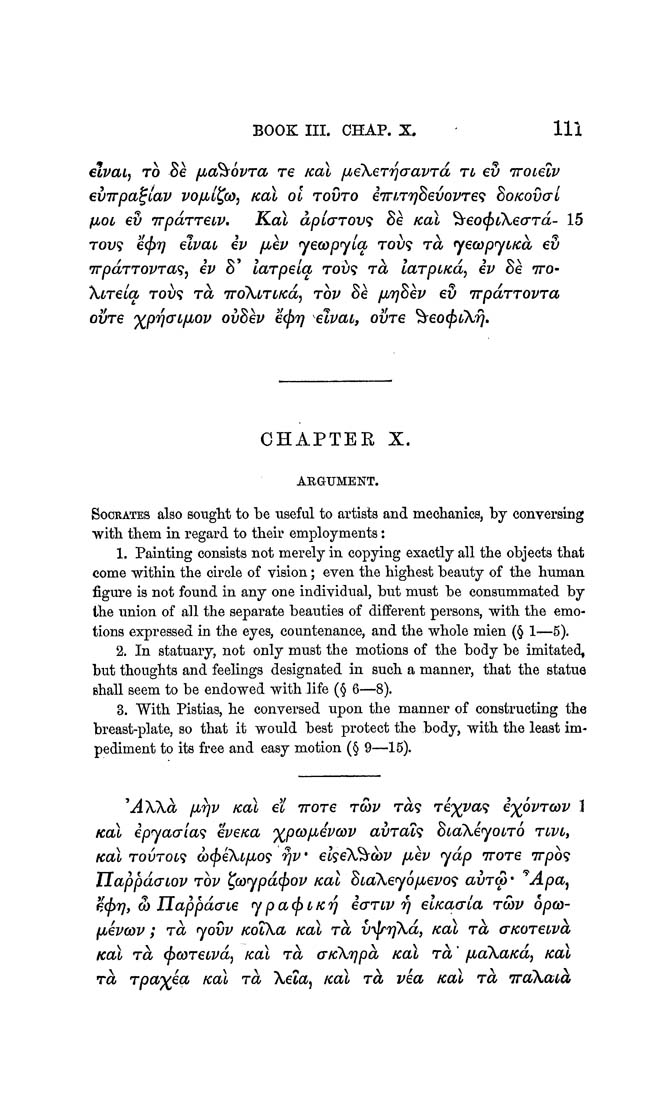BOOK IIL CHAP. X. Ill
elvat, Tb Se pta^bvTa Te Kal pteXeTyaavTa Tt ed Trotelv
evTTpa^iav vopti^co, Kal ol tovto iTTLTySevovTes SoKoval
ptot ed TTpaTTetv, Kal dptaTOVS Se Kal ^eocptXeaTa- 15
T0f9 ecpy elvat iv ptev yecopylct tovs Td yecopytKd ed
TTpdTTOVTas, iv 8' iaTpelct tovs Td laTptKa, iv Se tto-
XLTelct TOVS Ta TToXtTtKa, Tbv Se ptySev ed TTpdTTOVTa
ome XPV^'^P'^'^ ovSev ecpy elvat, ome ^eocptXfj,
CHAPTEE X.
ARGUMENT.
Socrates also sought to be useful to artists and mechanics, by conversing
with them in regard to their employments:
1. Painting consists not merely in copying exactly all the objects that
come within the circle of vision; even the highest beauty of the human
figure is not found in any one individual, but must be consummated by
the union of all the separate beauties of different persons, with the emo¬
tions expressed in the eyes, countenance, and the whole mien (§ 1—5).
2. In statuary, not only must the motions of the body be imitated,
but thoughts and feelings designated in such a manner, that the statue
shall seem to be endowed with life (§ 6—8).
3. With Pistias, he conversed upon the manner of constructing the
breast-plate, so that it would best protect the body, with the least im¬
pediment to its free and easy motion (§ 9—16).
^AXXd ptyv Kal et TTOTe t&v Tds Texvas ixbvTOov 1
Kat ipyaaias eveKa XP^P'^^^^ avTals StaXiyotTb Ttvt,
Kal TOVTOts &<peXtptos yv* elseX^dov ptev ydp TTOTe Trpbs
Uappdatov Tbv ^coypdcpov Kal StaXeyb ptevos avT&* "^Apa,
ecpy, ft) Uappdate ypa(ptKy iaTtv y elKaala t&v bpco-
ptevcov; Td yovv KolXa Kal Td vyJryXd, Kal Td aKOTetvd
Kal Td cpcoTetvd, Kal tu aKXypd Kdt Td' ptaXaKd, Kal
Td TpaxicL Kal Ta Xela, Kal Ta via Kal Td TraXatd
|








